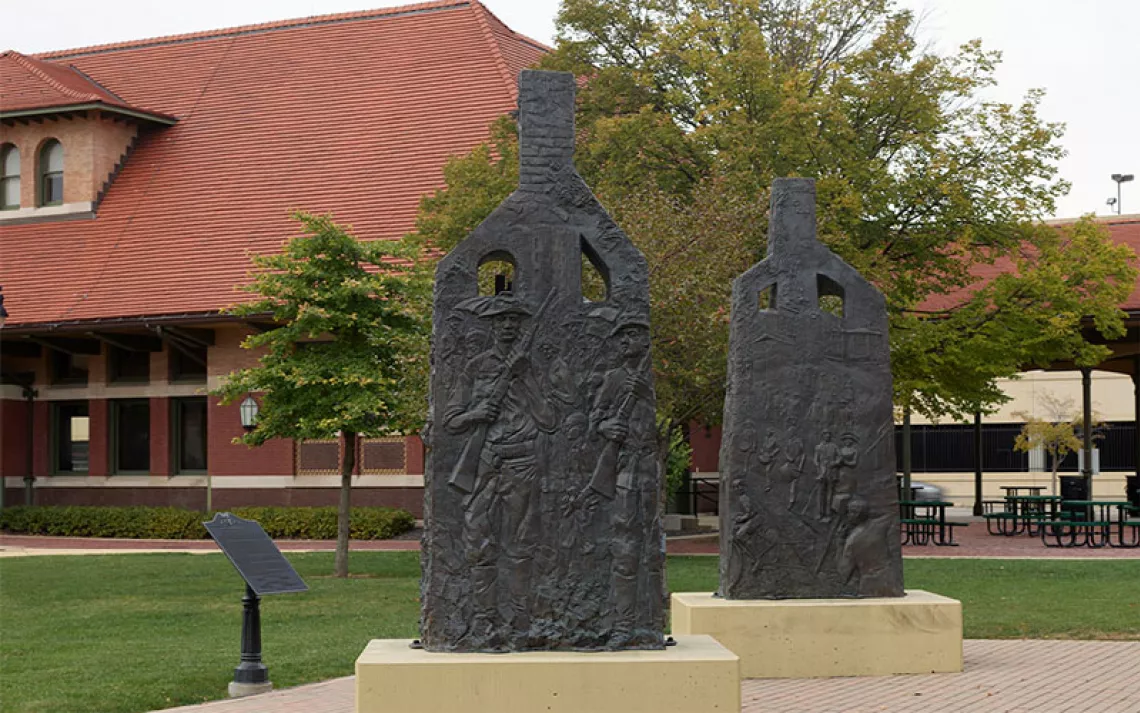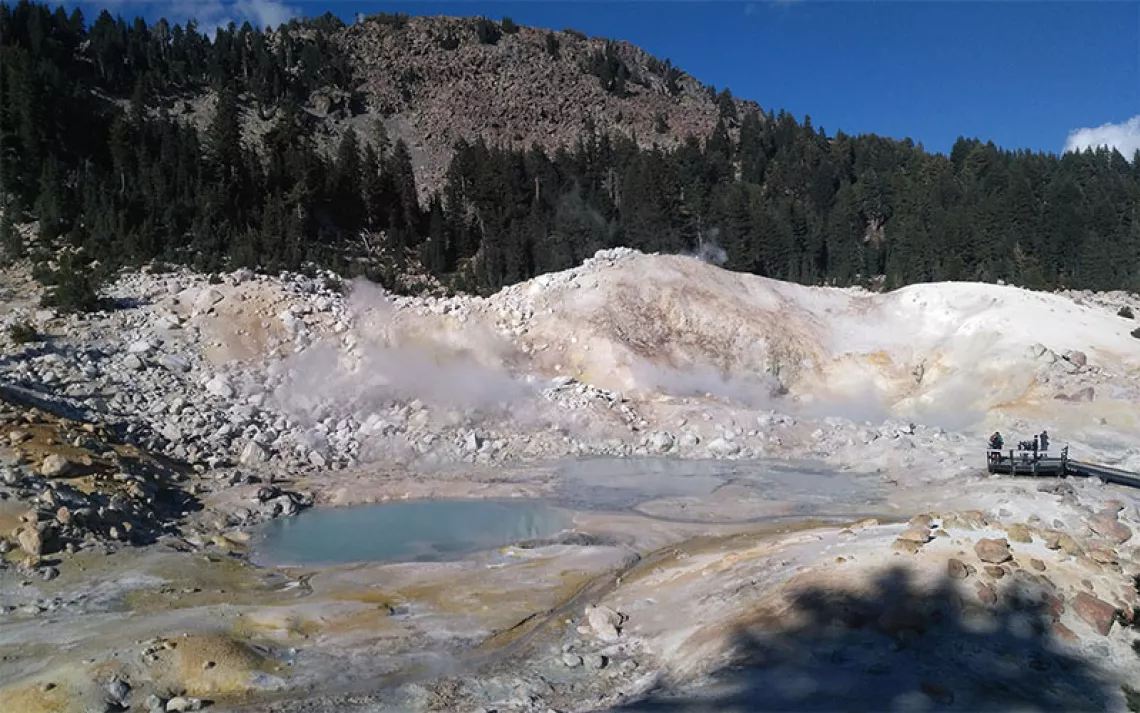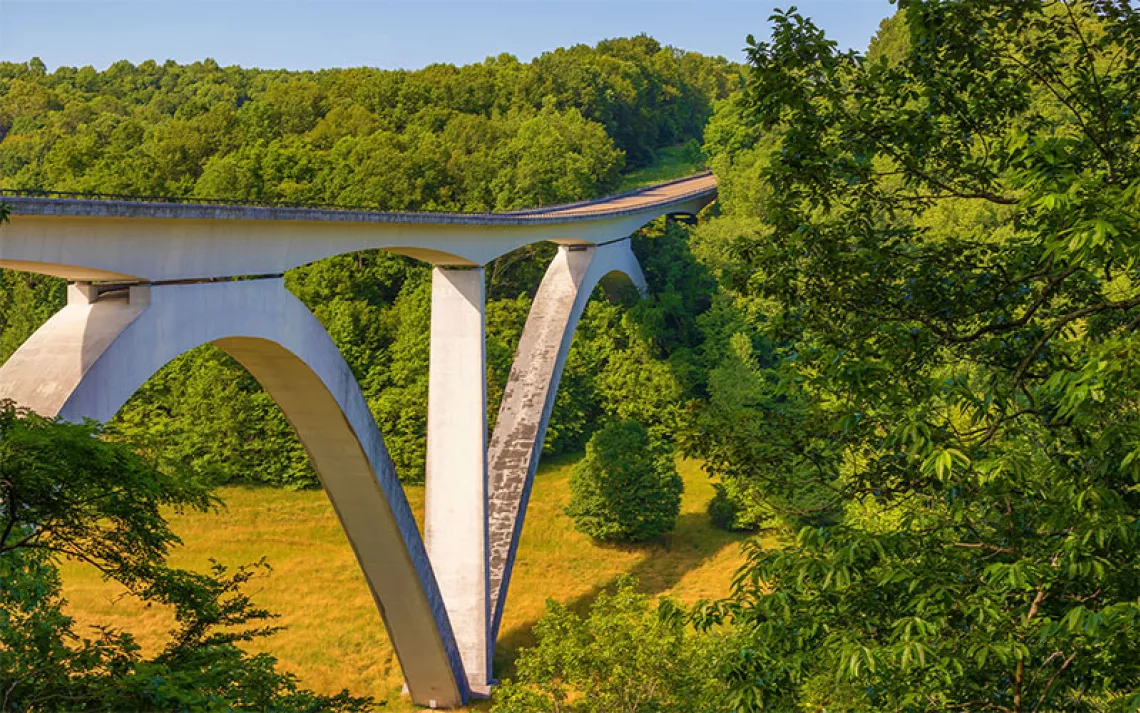Beyond Gold Mountain: Yosemite’s Chinese American History
Inside the discovery that revealed a new side to the national park’s history

In the Yosemite wilderness near Sing Peak. | Photo courtesy of Yenyen Chan
It was the summer of 1974, and my family was cruising along the Yosemite Valley floor when my father waved his hand out the window of our old wood-paneled station wagon. “Pick a mountain, any mountain,” he grandly offered. When my four siblings and I exchanged confused looks, my father explained, “Just think, you can choose one of these spectacular monuments and call that mountain yours for the rest of your life—who’s going to stop you?” (I understand now that my Chinese American father was into spirit rocks long before they became trendy talismans.) My little brother pointed his finger at Half Dome, and I laid claim to El Capitan. My choice seemed much sturdier that Half Dome (as in, it hadn’t broken into two), and with a name like “The Captain,” it was clearly the boss.
In the years and decades to come, whenever I returned to Yosemite, I always sought out a quiet moment with El Capitan and said “thank you” to the 7,569-foot granite god. I sometimes wondered whether my father actually knew that the monument would guide me throughout my life, its majesty and purity resonating through my dreams, even when I was back home in Los Angeles surrounded by skyscrapers, billboards, and smog. My father had a framed photograph of Half Dome on his wall until he died in 1999; now, it sits next to the photo of El Capitan that I’ve always kept on my desk.
Just recently, I have come to learn of another among Yosemite’s natural landmarks that would no doubt have meant a lot to my Chinese American father: Sing Peak. Tucked into a less popular expanse of the park, at the border of southeast Yosemite and Ansel Adams Wilderness, this 10,552-foot formation, dotted with alpine trees exists far away from the hubbub of the valley and Yosemite’s other all-stars: Bridal Veil Falls, Sentinel Rock, and the Three Brothers. Reaching its base requires a seven-plus-mile trek. But since the mid-2000s, Sing Peak has nonetheless become one of the park’s rising stars.

That was around the time that Yenyen Chan (pictured, right), a Chinese American Yosemite ranger, first started to talk publicly about a black-and-white photograph she’d found in the early 2000s. The photo, believed to be taken in the early 20th century, featured a smiling Chinese man wearing a white apron in the middle of a forest. The man, standing before an early-model portable camping stove and surrounded by woks and frying pans, was an immigrant named Tie Sing, and he was the backcountry cook for the U.S. Geological Survey. (More on Tie Sing in a moment.)
After one of her Yosemite supervisors mentioned Chinese laborers’ contributions to the park, Ranger Chan started researching the topic and unearthed this photograph, as well as a cache of others featuring 19th-century Chinese immigrants in Yosemite, in the archives of National Geographic and UC Berkeley’s Bancroft Library. The discovery spurred Ranger Chan’s research into the role the Chinese played in building this world-famous Californian park—widely considered the crown jewel of the national park system. The groups of Chinese men immortalized on film, she eventually discovered, were laborers, there to help Yosemite take its future shape. Seeing these photographs sparked many emotions. “I felt a sense of pride that Chinese immigrants had this significant role in Yosemite,” Chan says. “I also felt that this was an untold story that maybe even most Yosemite history buffs did not know.”
Chan eventually took her research and transformed it into a talk, “A Hard Road on Gold Mountain,” which she gives at Yosemite and around California. Here’s what her findings revealed:
Starting in 1848, thousands of southern Chinese were drawn to the West by the promise of mineral riches—“Gold Mountain” is what the Cantonese called California. But by 1850, the state had levied a foreign miners tax, which, along with the dwindling natural supplies of gold, made mining a losing proposition. Dropped into this often-hostile new land, the Chinese had to find other work in order to send money to their families back in China.
In the early 1870s, some 300 of these men turned toward one of the most arduous and dangerous tasks available: building roads to Yosemite during the winter, when blizzards pummeled the surrounding mountains. The owners of the Wawona Hotel hired laborers to build the Wawona Road over the winter of 1875. The Chinese managed to build this road without the benefits of modern machinery—no bulldozers or drills. Instead, they took to solid rock with blasting powder and handheld picks. For more than four bitterly frosty months, the Chinese laborers built Wawona Road. They also constructed another 56 miles of stage-wagon road, which eventually became known as the Tioga Road. My father would have been proud to know that our ancestors helped make Yosemite a place everyone could visit.

But the Chinese influence doesn't end there. Every year, Ranger Chan and the Chinese Historical Society of Southern California lead a group hike (photo courtesy of Christine White Loberg) up to Sing Peak, the aforementioned Yosemite mountain named after Tie Sing, the man featured in the photo unearthed early on in Ranger Chan’s research quest. An immigrant who played a notable part in the protection of the park, Sing was another Chinese worker who, when the gold ran out, sought employment in Yosemite. Instead of building roads, however, he turned to the kitchen, cooking delectable dinners for the Mather Mountain parties, a collection of powerful industrialists and politicians invited to Yosemite by Stephen Mather, the first director of the National Park Service. Mather’s hope for these luxurious camping trips was two-fold: to show the men the splendor of Yosemite and inspire their support for his preservation efforts.
Accompanying the Mather parties on excursions into Yosemite’s backcountry, Tie Sing lovingly barbecued steaks and fish on an outdoor grill and went to great lengths to craft delicious fare and freshly brewed coffee for this American crew. Despite the idyllic settings, these tasks came with their share of challenges. For one, Tie Sing had to deal with their pack mules’ disrespect and clumsiness. One time one such animal, toting sardines and fresh fruit, wandered off never to be seen again. Another team mule tumbled off a mountain road, utensils and sourdough-biscuit starter flying into the air. The mule somehow survived, but the foodstuffs and silverware disappeared into the wilderness.
Beyond those challenges, Tie Sing had to figure out a way to keep meat fresh out in the backcountry. The method he innovated: wrapping it in wet newspapers soaked in the chilly Merced River and then placing the meat where the breeze would keep it cool. To make biscuits for breakfast, he draped rounds of dough, in packages, onto the working mules. Their body heat helped the dough rise, just in time for Sing to pop them into his rickety portable oven and serve them, hot and fluffy, for breakfast.
His efforts allegedly paid delicious dividends, for the Mather men dubbed Sing “the gourmet chef of the Sierras.” In honor of his service, the United States Geological Survey named Sing Peak after the affable cook in 1899. Tragically, in 1918, Tie Sing ended up giving his life to Yosemite—he’s believed to have perished in the park during a “field accident,” which possibly involved a cooking-gas explosion. At the very least, he had lived for some 19 years with the knowledge that his commitment to the park had helped inspire powerful men to preserve it.
This summer, my family and I plan to pilgrimage to Sing Peak with Ranger Chan, and while no monument will ever replace El Capitan for me, Sing Peak captures my heart and my imagination, too—a symbol of the resilience and sacrifice of my ancestors’ countrymen to pave an enduring highway to Yosemite.
 The Magazine of The Sierra Club
The Magazine of The Sierra Club



